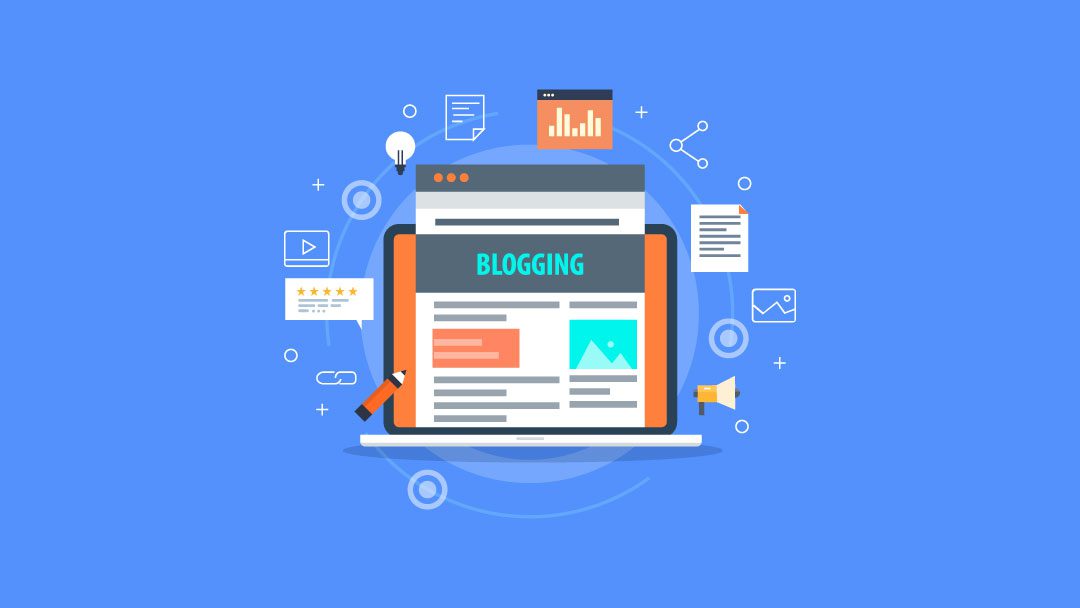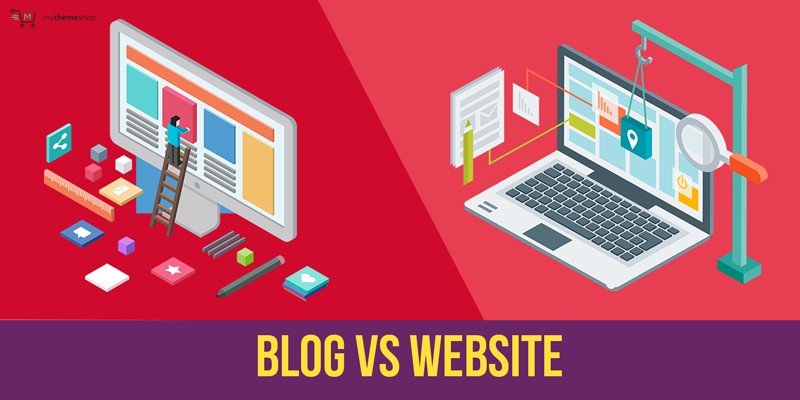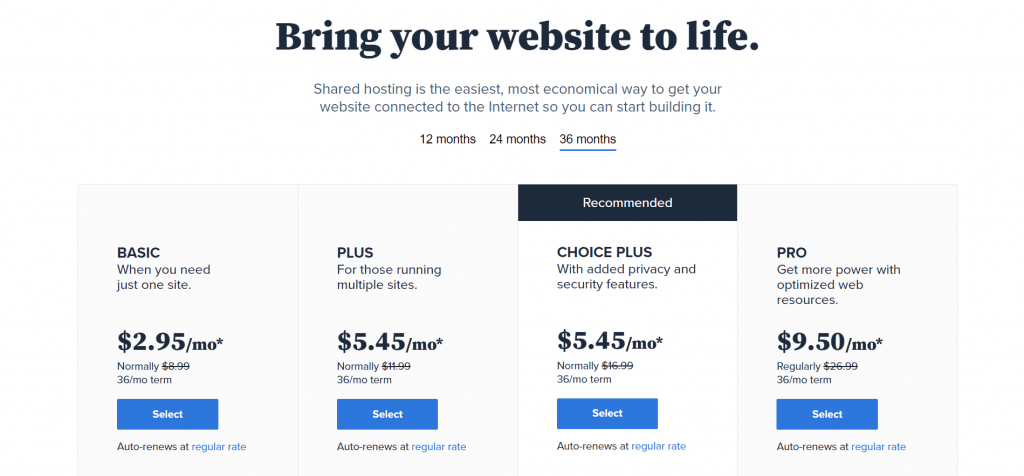Originally posted on September 25, 2021 @ 9:17 pm
What is a blog? Someone may ask. A blog talks about written content, visuals, and other media you can publish online. Blogging began as an opening for people to create diary-style logs, but recently, it has been fused into websites for many businesses.
The attributes of blogging business consist of regular updates, easy-to-understand language, and chances for person who reads to engage, connect and start a discussion.
I’ll walk you through the general idea of what is a blog, reasons blogging is popular, the best blogging platform and tips to start a blog.
Let get started…
What Is Blogging?

Blogging is the process of updating your site with relevant, compelling and quality content to drive in traffic that are willing to take a particular action. Blogging is in recent time become a business and a profession where bloggers (people who earn a living through blogging).
What is a Blog?
To start with, the word blog is in fact an abbreviated form of its initial name, “weblog.” These weblogs permitted initial internet users to “log” the stories of their day in diary-style entries. Blogs a lot times let readers to comment, so as they turn out to be more famous, communities bounded up around popular blogs.
The content of a blog can be different in many ways. For instance, travel blogs may perhaps introduce many photographs with a small number of written contents, however political blogs may consider more written words from the day’s news than images.
The acceptance of YouTube and related sites also contributed to the increase video blogging, or “vlogging.”
Similar to the majority internet-based inventions, many business persons saw marketing opportunities in having a blog, and the acceptance of blogging amongst the business population facilitated additional rise in the admiration of the blogging platforms. Not just that a blog can be used for marketing a business, but it can also turn out to be a home-based business in and of itself.
What is a Blog Meant for? – Blogging Definition.
First of all, blogging is a continuous process of taking action with a blog which is as easy as creating a website and publishing quality and unique content on it. Bloggers that are skilled at website design can buy a domain name and build the website themselves.
People with a smaller amount of HTML knowledge can create an account with blogging platforms like WordPress that make things easier the web design and publishing process.
A blog is generally a minimal website. Older content may be collected in separate portions of the site, and there can be another page for contact info or a bio, but the blog itself is normally just a single page that can be scrolled through — just like to the news feed on social media sites like Facebook.
Just like a Facebook news feed, a blog showcases the latest or most recent content at the top of the page.
Most of the blog posts are usually created by a particular author. On the other hand, when a company or business runs a blog, it might spare some dollar for blog content — either by contracting a team of content writers or buying content to post.
One more exceptional characteristic of blogging is backlinking. This is a method when a blogger links with another person’s blog using a blog post from either side.
For example, if a music tutor runs a blog, and writes blog post on the subject of how to form a chord, they may possibly link to another musician’s blog to illustrate an example of the chords in action.
Also, a political blogger may link to another blog on politics and also review how they agree or disagree with a post on that blog. Backlinking, alongside with the comment section, nurtures the perception of community that makes blogs exceptional.
Blogging vs. Websites

Some persons are confused concerning what differentiates a blog over a website. Part of the confusion rises from the point that a lot of businesses make use of both, normally by including a blog section to their business website. On the other hand, there are two qualities of a blog that separates it from a usual website.
First, blogs are updated frequently. Whether it’s a parenting blog where a woman shares exciting activity in parenting, a food blog sharing new ways, or a business offering updates to its services, blogs usually have new content included quite a lot of times a week.
Websites might sometimes include new information, but for the most portion, they proffer static content that hardly ever change.
Moreover, blogs let for reader to engage with the content. Blogs and social media networks on a regular basis go hand-in-hand for the reason that they assist in a related intention of hooking up audience with each other and the content creator.
A number of websites might integrate plugin that let people to comment, but in general, a blog allows for more conversation, engagement and interaction than a traditional website does.
Advantages and Disadvantages of Blogging
Now let’s look at the advantages and disadvantages of blogging, this section will help you to understand the pros and cons of blogging – keeping you on your toes for success.
Advantages of Blogging
- Good for SEO
- Maintains communication with customers
- Builds rapport with customers
- Generate alternate income
Disadvantages of Blogging
- Time-consuming
- Constantly requires fresh ideas
- Payoff is delayed
- Blogging in and of itself won’t generate income
Advantages of Blogging
1. Good for SEO:
Search engines are attracted to new content, and so, blogging is an awesome search engine optimization (SEO) tool. An important attribute of blogs is the rate with which contents are updated, and the new content assists in increasing website’s SEO performance.
2. Retains conversation with customers:
Blog posts keeps your customers and clients updated on the trending topics, letting them know about new deals, and offer relevant tips. The more regularly you post useful and quality content, the more frequently a customer visits your blog, and the more likely they are to purchase your products.
3. Builds relationship with your audience:
blogging doesn’t only let you showcase your expertise—building your skill and authority—on the other hand people can also comments and relate with you. This allows your audience to get to know you better, and optimistically, cultivate relationships that converts into more buying.
4. Generate passive income:
Making money from a blog is a means of creating passive income from it. With your product or service, a blog can create income from alternative sources such as advertising and affiliate marketing.
Blogging is adaptable and manageable, making it a terrific possibility for you or anyone else who want to be a lifestyle business person.
Disadvantages of Blogging
1. Time-consuming:
To be successful in your blogging journey, you need traffic. And the only way to drive and retain traffic is to create blog content at least many times a week. This is to effectively engage your readers and also increase SEO performance. In doing this, it’s time-consuming and stressful.
2. Frequently entails fresh ideas:
It can be exhausting to regularly extract and update fresh content. Though you don’t have to do it all alone. You can have guest post from a guest writer or engage a freelancer. Another alternative is to curate content from others. You can buy PLR (private label right) content and amend it for your blog.
3. Returns takes long:
One of the principal disadvantage of blogging is that it’s time-consuming with little returns at the start. Building up readership and momentum takes time after which you start get returns.
4. Blogging inconsistently won’t generate income:
Sometimes ago, updating of post was sufficient to create traffic and income. These days, to become successful in blogging you need email marketing, additional tactics such as content marketing, and a busy social media network, such as a Facebook.
Starting a Blog?

Now that we have defined what is a blog and explain what is blogging. Do you know that starting a blog or including a blog to your already created website is very easy and cost-effective. Just follow these four steps accurately.
1. Step to start a blog
Let’s look at the steps to starting a blog;
a. Set Up the Blog
To set up a blog you can start off from a free blogging platform like WordPress and Blogger, but to have control and a professional brand name, invest in a domain name and a hosting service. Then install WordPress or an alternative content management system on your host if you don’t want to create the whole website from scratch.
b. Include Content
As soon as your blog is up and functioning, the next step is to create quality content to help grow your business. Create a set plan for writing and posting blog posts. Create a content plan so you can constantly know what you will be posting.
Learn more on how to write SEO blog content for your business
c. Market Your Blog
Similar to all other business concepts, every business’s success emerges from marketing and causing your content to appear in front of your target market. Great techniques to reach your targeted audience are through social media, email lists, and influencer marketing, podcasters, and public relations. Repurpose your blog content to market your blog across social media platforms, for example, using quotes on your Twitter or Instagram profiles, or by creating a video of your blog content to share on your YouTube channel.
Learn more on how to promote your blog.
d. Monetize
Even though your blog can go together with an existing website, blogging is also a great way to make money online to your home business. You can also start affiliate marketing using your blog and promote other businesses’ products and services – as a passive means of making money.
Another way to monetize your blog is through feed ad networks like AdSense. But if you have a business that renders service you’re advertising with your blog, you can create your own digital product to balance it. Or, if you have your own product, you can offer a service.
8 Easy Steps To Starting A Blog
Now is the time to begin our step-by-step guide on how to create a blog from scratch.
Step 1: Select A Perfect Niche For Your Blog
The first step to start and run an effective blog is to choose the perfect niche for your blog.
First, make sure to pick a niche that you are the most interested in — the one you are passionate about. That way you will follow your passion and enjoy your blogging journey.
What Is A Blog Niche?
A blog niche is a line of course of interest where ideas, topics of related subject matters are created as contents or articles and shared to the public through a blog to educate, inform and solve relevant problems asked by the public.
Subsequently, you should choose a niche that you’ve made your research to have enough audience interest.
As soon as you selected a niche, ensure to validate it. Further down is a 3-step procedure to check the success of your niche.
A 3-Step Blog Success Validation Process:
- Check the size, audience attendance of the niche.
- Research on your potential competitors in the same niche.
- Evaluate the possibility of making money from it.
This procedure will help you gain a perfect idea of the size, competition, and monetization capacity for your intended niche.
Here’s a guide on the best blogging niche you start with and how to make money blogging
Step 2: Decide On A Blogging Platform
At this point, you must look for the best blogging network out there and decide the category of blog running software you are going to use. I recommend that you build your own blog on a self-hosted WordPress platform.
Once it comes to prevalent blogging sites, here are the two options available:
- Hosted Blog Platforms (free or freemium plans).
- Self-hosted Blog Platforms (free open-source software).
1. Hosted Blog Platforms
For a lot of bloggers that are just starting out, well, it’s appealing to make use of free hosted platforms such as WordPress.com or Blogger.com.
Limitations Of Free Hosted Blogging Platforms
You must know that these free platforms come with limitations like;
- Your blog name will be set as a subdomain (examples: yourblog.wordpress.com or yourblog.blogspot.com).
- You’ll be constraint with their rules and restrictions. Free options come in handy if you want to test the platform.
But, if you’re serious about starting a blog and becoming successful in blogging, you’ll have to start paying for full services and a custom domain name.
2. Self-Hosted Blog Platforms
Self-hosted blogging platforms also known as CMS (Content Management System) gives you many choices to run with. The very best and popular CMS is the free and open-source system WordPress.org.
Features Of A Self-Hosted Blogging Platform
- Self-hosted platforms let you to set-up and run your blog using your own domain and web hosting.
- You’re fully in charge of your blog and its contents.
- It will cost just a few dollars every month for the hosting account, and around ten dollars per month for a custom domain name. The actual blogging platform is free.
- If you plan to run ads, sell products, or services via your blog, then this is the best way to go.
A lot of hosting service providers can support an e-commerce blog.
What Is The Cost To Start A Blog?
The table below shows a simple 1-year plan pricing similarities of the three most prevalent blogging solutions, with a custom domain name.
For WordPress.org CMS hosting services I will illustrate Bluehost web hosting’s pricing plans.
| WordPress.org | WordPress.com | Wix.com | |
| Blog hosting services | $4.95 per month (billed for 1 year) $2.75 per month (billed for 3 years) | $5.00 per month (billed for 1 year) | $8.50 per month (billed for 1 year) |
| Domain name registration | First year free, after $17.99 per year |
First year free, after $18.00 per year | First year free, after $14.95 per year |
| Storage space* | 50 GB | 6 GB | 3 GB |
| Bandwidth* | Unlimited | Unlimited | 2 GB |
| Total for the first year | $59.40 | $60.00 |
Learn how to make money blogging.
- Storage space indicates the amount of space your blog and media files can use.
- Bandwidth tells you the volume of files your blog can transmit to your visitors.
These two factors are very essential when starting a blog – its growth and traffic surge.
For you to create a WordPress blog, you must decide on these two important things:
1. A domain name and
2. A web hosting provider.
I always recommend that my readers try using Dreamhost or Bluehost, a company that powers over 2 million websites worldwide. I was able to negotiate a special deal only for my readers.
Step 3: Choose A Domain Name
The next step to starting a blog after deciding on your niche and blogging platforms is choosing an effective domain name. Whichever name you chose irrespective on what niche you have chosen, will be attributed to your business and known online.
Your blog’s domain name is your blog’s unique address on the Internet. Your domain name will continuously be yours as long as you are paying the yearly fee ($10 to $15 for a .com domain).
Your URL (uniform resource locator) can be easily typed on any browser’s address bar or can be discovered through search engines like Google and Bing – if you optimize your blog for SEO.
Related Post Alert: Learn what SEO is and how to optimize your blog for SEO.
And also Learn what is a search engine and how it works.
Your domain name could be the very common “.com,” or it could possibly be country or niche-specific – “.us” or “.tech”. The common rule is to go for a “.com” domain extension, but some extensions that just works fine is, “dot net” or “dot blog”.
At the end of the day, your name should be memorable, but if another type of domain extension or country code makes your domain more memorable, then break the rules!
Step 4: Get A Web Hosting Account
Once you’ve chosen your domain name, choosing a dependable web hosting service will be one of the smartest step you take.
By far, the performance and functionality of your blog depends solely on your blog hosting. A web host ensures that your site is accessible 24/7 on the web for readers and it’s where your contents and files are kept online.
A large amount web hosting companies provides a free domain feature for the first year when you buy their services.
On the contrary, a bad web host will cause your blog many problems. Just picture that you have decided to buy a smartphone from a mobile company that has no receiving signal. Your web host is the most important part of the steps to starting a blog successfully; for that reason, you must choose a trustworthy provider. Bluehost is a trustworthy provider.
According to our research, many blogging experts and information obtainable on the official WordPress website, Bluehost is a best choice for blog hosting.

Step 5: Starting A Blog On WordPress
This part offers comprehensive data to assist you sign up for Bluehost’s web hosting account and subsequently set-up a WordPress blog. As an illustration, I will guide you how to create a blog with Bluehost. I also add in some images of the pages that you need to go through.
1. Visit Bluehost Homepage
Go to the Bluehost.com website. Then click the green “Get Started Now” button.

2. Select Your Hosting Plan
The next page to pop up is the pricing page where you get to pick a hosting plan. But if you are just starting a blog, go with the Basic plan. Subsequently, you can definitely move to a higher plan either Plus or Choice Plus plan as soon as your blog starts increasing in popularity and traffic. Look at what each plan presents, like the Choice Plus plan goes with Domain Privacy and some other add-ons. If your financial plan permits, you can go for the recommended plan.

3. Set Up Your Domain Name
As I stated earlier in this post that your domain name is your blog’s address, take your time to craft a name that’s distinctive and memorable. Just log in your preferred name in the “new domain” box and Bluehost will let you know if it’s existing or not. If it doesn’t exist, Bluehost will make available to you a list of related names to choose from.

Don’t be troubled if you can’t get a good name at the moment, you can skip this step and pick a domain name later.
If you already gotten a domain name elsewhere, you can use the name. Just log it in the “Use a domain you own” box.
4. Registration Page With Bluehost
After choosing domain name and clicking the button “next”, the next page that Bluehost will take you to is the registration page where you get to fill in your private data yourself, or you sign in with your Google-email account to make the process simpler.

Include Your Account Information
On this page, get started by filling out your personal info.
Pick Your Hosting Package
At this moment, you should select an account plan from the options that pop-up. Bluehost presents a 12-month, 24-month, and 36-month packages.
But with a 12-month plan, you’ll need to pay a lower amount forthright, but with other two plans, you’ll get a better offer if you are set for a longer-term loyalty.
Package Extras
Scroll that to evaluate the package extras wisely. Note, it’s not every extra that’s important, so uncheck the boxes of extras you don’t need, and as you do, your total amount you will pay will reduce.
You can keep the Domain Privacy Protection box checked, as this service will help hide your personal private info from the global file, which is openly visible to anyone on the web.
Payment Information

This page let you enter your payment information. Check the box that you have read and agree to Bluehost’ TOS (Terms of Service), afterward click on the green “Submit” button.
After making payment, Bluehost will send a confirmation email to you immediate your online payment is successful. Also an email will be sent to you to confirm your email address that help activate your domain name.
Then, it’s time to set-up your Bluehost account. You are a step closer to starting a blog!

5. Create Your Account
It’s time to create your account with Bluehost.
- Step 1. Click on “Create your account” button.
- Step 2. Enter your password and complete the account set up.
- Step 3. Click on the “Go to login” button.
- Step 4. Fill in the boxes “Email or Domain Name” and “Password”.
You’re almost set. After that, you’ll start getting ready to create your blog.
6. Creating Your WordPress Blog With Bluehost
Immediately you log in to the Bluehost account, you’ll be offered a 4-step means to help you create a blog website. If this is your first time want to create a blog, you should follow this 4-step process.
But it not, you can click on the “Skip this step” button and create a blog on yourself inside the Bluehost hosting account.
4-Steps Process to Create a Blog:
Step 1.
You will start the process by answering 3 questions:
- What kind of site are you creating?
- What type is it?
- Who are you creating a blog for?
In my own case, I chose: Blog, Personal, Myself. You can choose the same if your choice matches mine or you would choose what suits your personality.
Step 2.
At this point, pick other add-ons would you like your blog to have. Bluehost lets you choose from a few options they have.
Step 3.
At this stage, you get to answer a small number of questions like
- What do you want to name your blog?
- What is your blog’s tagline?
- Are you comfortable with creating websites?
A quick reminder, you can change this anytime at the long run.
Next, you get to choose your preferred themes offered by Bluehost and check if you like any of them but if you don’t see a theme you like, skip this step. You can at any time change it and use a different one later.
As soon as you’ve complete these 4 steps process, your Bluehost account page will pop-up. At this moment, the WordPress software is installed and you are set to structure your blog!
Right now, if you enter your domain into the web browser you will see a “Coming soon” page. Let’s finish the process together and launch your blog!
7. Launch Your Blog
Within your Bluehost dashboard, you’ll see an option to further personalize your blog’ theme according to Bluehost’s recommendations. These options are available for you to do some pre-launch customization to your blog.
Immediately you click the “Launch My Site” button, your blog goes live on the internet!
At first when you type your blog name after launching your blog inside a web browser, it wouldn’t look beautiful because it’s the first draft of your blog. You just need to do some changes, add relevant content to make polish and complete it.
Learn more on how to customize your blog theme and how to write a blog post.
You can log on to your WordPress dashboard from your Bluehost account by clicking the blue-colored “WordPress” button at the top right edge of your screen.
Takeaways on What is a Blog
Wow, at this point I hope you should know what is a blog, in summary of what we’ve discussed;
A Blog is a short form of “weblog,” that started as a diary-like channel for first online users.
Present day blogging style is an extensive channel that includes written contents, images, videos, and all categories of area under discussion matters.
You can make use blogs to drive traffic to your website, increase SEO functioning on your site, or make money from it through passive means.
Blogs are not the same compared to conventional websites for the reason that they’re regularly updated, and they make it simpler for the audience to connect with each other and the content you’ve created.
I hope this post helped you, if it does please share with your families and friends.
He is Digital Marketer who is passionate about blogging. MarketingBlogo was birth has a result of misconceptions about the reality of online marketing for business growth.




More Stories
How to Generate Passive Income in Your Business and Make Millions
How Growth-Driven Website Design Can Increase Your Conversion Rate
What Is SEO Web Design, And Do I Need It?